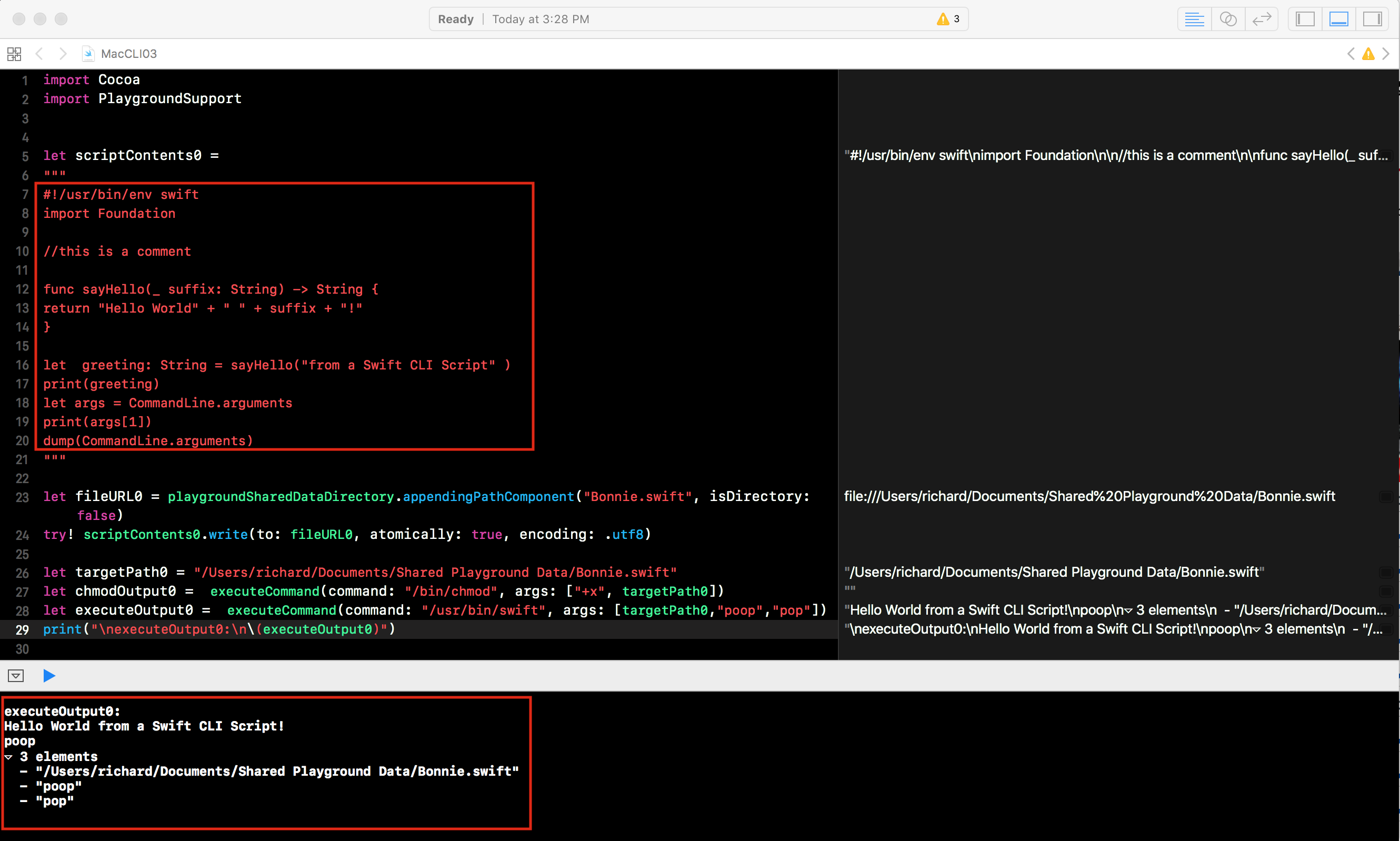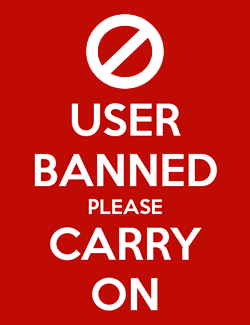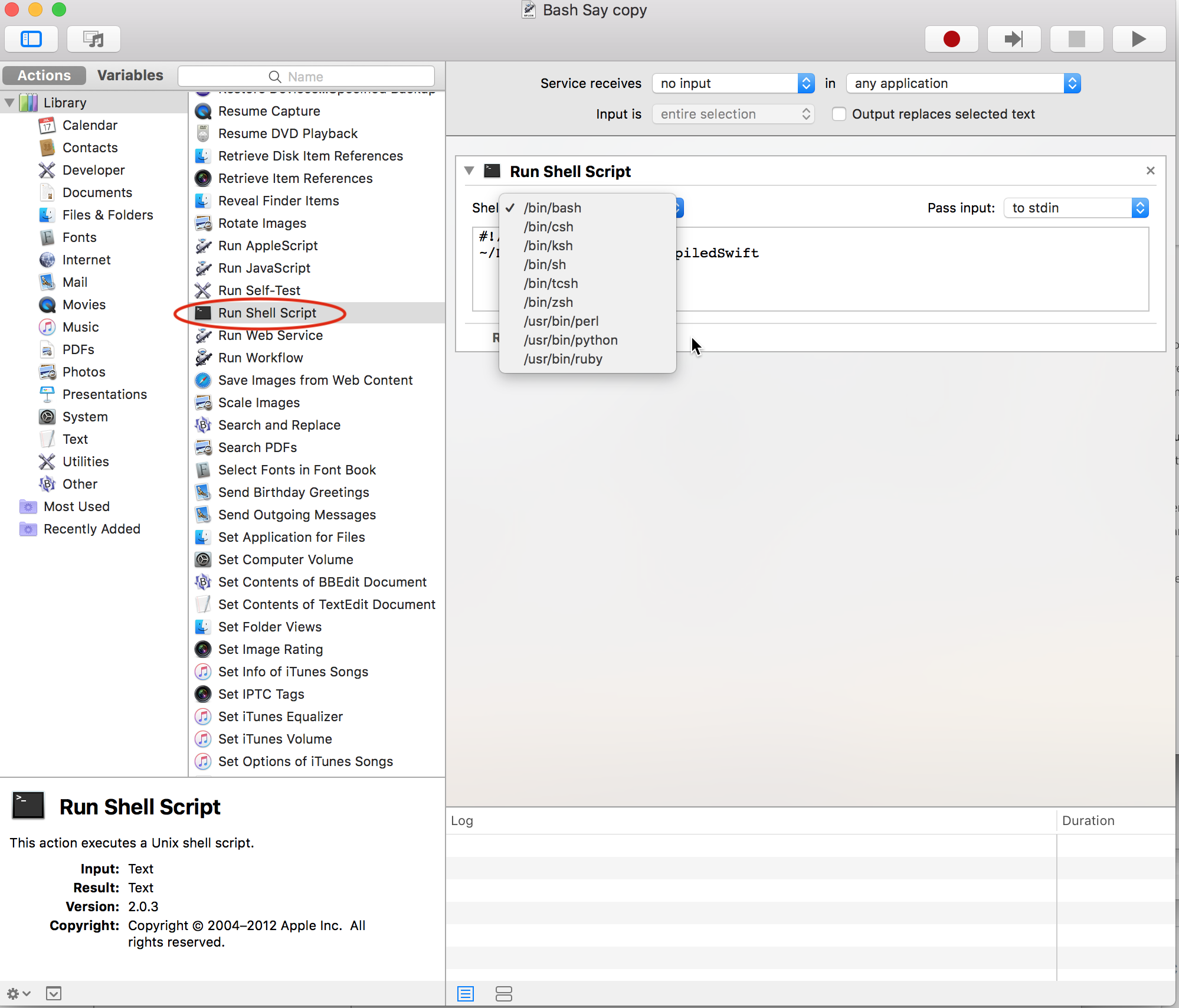dick applebaum
About
- Username
- dick applebaum
- Joined
- Visits
- 89
- Last Active
- Roles
- member
- Points
- 2,087
- Badges
- 2
- Posts
- 12,527
Reactions
-
How to create keyboard shortcuts to launch apps in macOS using Automator
Swift is a Scripting language (as well as an app development language, System programming language, Server Application language).Soli said:
Is that going to happen since Objective C has never been an option for Automator. From your screenshot, it looks like only scripting languages are supported, which makes sense.dick applebaum said:
I would like to see Swift as an option for a Automator Shell Script:Soli said:
But it's still an Apple app that's included with macOS and there are countless aspects that are much easier than trying to teach someone to use AppleScript.dick applebaum said:
Yeah, but...Soli said:
How so? It's not better than a dedicated app and it's not something I'd recommend for the average user, but it sure does make quick work of solving problems over using AppleScript.macxpress said:Ugh Automator....one of the most frustrating and unintuitive apps in macOS.
Automator hasn't been upgraded recently & the web site is not an Apple site -- it belongs to the Automator Guru who used to work for Apple.
[images]
BTW, there are a lot of macOS applications included with macOS that weren't updated with the 2017 release of High Sierra. There are even more when you look at the included apps that only have a 2017 date despite macOS point updates in 2018. Not updating an app just update an app doesn't mean it's being deprecated. What features in Automator are you looking for that should've been added because of changes between Sierra and High Sierra?
[image]
FWIW, Here's a Swift Playground, that:- writes a Swift shell script File
- makes it executable
- runs it


-
How to create keyboard shortcuts to launch apps in macOS using Automator
I would like to see Swift as an option for a Automator Shell Script:Soli said:
But it's still an Apple app that's included with macOS and there are countless aspects that are much easier than trying to teach someone to use AppleScript.dick applebaum said:
Yeah, but...Soli said:
How so? It's not better than a dedicated app and it's not something I'd recommend for the average user, but it sure does make quick work of solving problems over using AppleScript.macxpress said:Ugh Automator....one of the most frustrating and unintuitive apps in macOS.
Automator hasn't been upgraded recently & the web site is not an Apple site -- it belongs to the Automator Guru who used to work for Apple.
[images]
BTW, there are a lot of macOS applications included with macOS that weren't updated with the 2017 release of High Sierra. There are even more when you look at the included apps that only have a 2017 date despite macOS point updates in 2018. Not updating an app just update an app doesn't mean it's being deprecated. What features in Automator are you looking for that should've been added because of changes between Sierra and High Sierra?

-
Apple's Swift rises into top 10 programming languages, swapping places with Objective-C
Ya know...monstrosity said:I still hate Swift. Anyone who thinks it's quicker than a dynamic language to develop in is full of shit. Nor do I buy that it's 'safer' compared to Objective C in experienced hands. I also feel that it's harder to change you mind chop and change code on the whim, so developers are less inclined to experiment, resulting in an inferior product. Once the fanfare has died out, I'd bet a return to dynamism happens in one shape or another, either by a third party or by an intelligent compiler.
If you want the quick interaction and freedom to experiment of a dynamic (I assume that means interpreted) language you can use Swift Playgrounds. Swift Playgrounds work in iOS macOS and from the command line interface.
A while back I did a proof of concept Swift Playground that allowed you self-install a complex app without forcing the user to fiddle with multiple CLI steps. The playground contained:- the main Swift program
- source files -- subordinate Swift Playground programs
- resource files for use by the Swift Playground programs
It worked as follows: the main Swift Playground program passed resources to the subordinate Swift Playground Programs to:- create a [bash] shell script *
- make it executable
- run it
- insure that all necessary steps were executed properly or give meaningful messages for any failures
In essence, perform all the fiddley, cryptic, error-prone steps necessary to install, build and run an app.
* Access to low-level 'Nix scripts from a high-level Programming/Scripting language like Swift is the best of both worlds. FWIW, Apple considers Swift to be a System Programming Language -- this includes CLI Swift Scripts -- which can invoke other 'Nix scripts and components.
-
Another test finds HomePod frequency response flat, but results potentially meaningless
I am playing this (from iTunes Store) on 2 homePods:dinoone said:HomePod Mono or Stereo?Just play this song on your HomePod, Journey Of The Sorcerer by Eagles.At the very beginning the banjo reverb is growing from right to center, then from left to center.
It's easy to tell if you listen to it on a pair of earplugs or headphones.
Now if the same effect (at the very beginning the banjo reverb is growing from right to center, then from left to center) is reproduced also by the HomePod in your room, then it is stereo indeed, otherwise, as I expect, it is mono.I'm sure there are many more famous songs that could help to achieve the same distinction.
https://open.spotify.com/track/3OcBH9Vzd1UwJkQd3r1dVG?si=CwRmT4lwTK2uline5z03HQ- first, as a roll-your-own stereo as described in a prior post. You get separation and there is a sweet spot
- second, as just 2 homePods playing the song. You get separation everywhere -- no sweet spot.

-
Another test finds HomePod frequency response flat, but results potentially meaningless
foggyhill said:
It's not mono either so not sure wth you're saying and I've got very good hearing too, or so says the audiologist who tested me.zoetmb said:That's not a flat frequency response. Back in the hi-fi days, the measurement (with pink noise input) had to be from 20 to 20,000 Hz +/- 3db with no more than X% distortion (preferably 1% or under).
But even if it was flat, a flat frequency response won't sound very good to most people. That's why hi-fi equipment had tone controls and loudness compensation (which increased the bass and treble at low volume levels according to the Fletcher-Munson curve and which gradually had less effect as the volume was raised).
I happened to be at an Apple store yesterday to listen to the HP. IMO, it has an over-emphasized bass. On new, digitally recorded material, it sounded pretty good. But on tracks I tried from the 1960's-1970's (which I was pleasantly surprised were in the Apple Music library), it sounded kind of dull. And while the Apple person was a bit confused and had to look things up, a single unit is NOT stereo. At first, he claimed it was because "it contains lots of speakers", but when I told him that the number of speakers was not relevant and that it sounded mono to me, he did some more research and admitted it would take two for stereo and that stereo is not currently supported even with two units, but it would be with some future update.
Most of the reviews said the sound was great but that Siri sucked. But in my tests and even in the noisy store environment, Siri did really well - it never played the wrong track or artist that I called out and it properly heard me say "louder" and "softer" and "pause". It was far more accurate than the Apple TV achieved in the same environment.
If you read about it, you'd know that it actually uses Fletcher-Munson loudness compensation,
So, the curve is EXACTLY where they want it to be.
Many of the1960s to 1970s recording are truly horribly mastered and sound like crap.
(and yeah, I've collected music since the late 1970s and got things that go back to the 1920s)
Why not use some live modern recordings, some have minimal post processing to test instead.
Compressed audio of mainstream pop is probably the worst music to test with any speaker.
Here's one that I have that dates back to 1918 -- It sounds pretty good in jerry-rigged stereo on 2 homePods -- even the YT playback.


